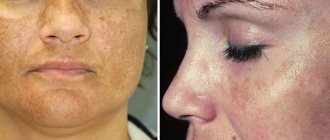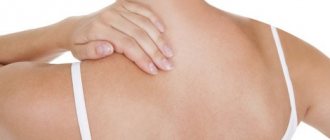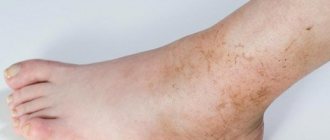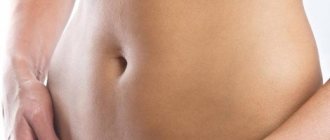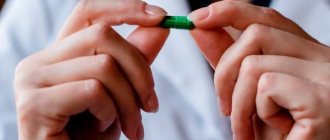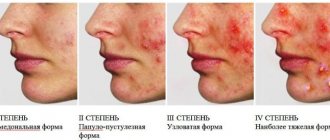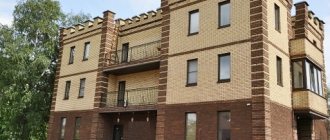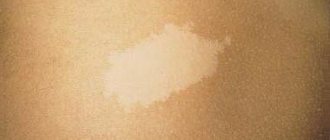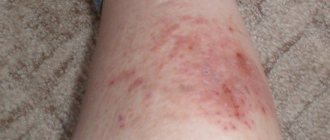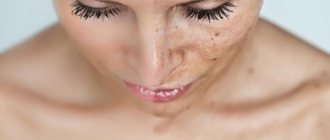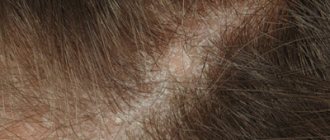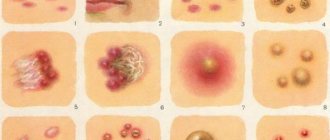Any spots on the face that are noticeable to others always upset women. Brown spots on the face can appear in both men and women at any age. As a rule, pigmentation makes itself felt after the age of 35. It is characterized by its individual shape, the saturation of the shade of the pigment area, and the size of the spots. If you find brown spots on your body or face, it is recommended not to put off visiting a dermatologist. The doctor will conduct the necessary examination and give recommendations for treatment.
Let's figure out what exactly leads to the appearance of age spots, whether it is possible to prevent their formation and what to do when they have already appeared.
Appearance of pigmentation
Brown spots on the face occur in both young and older people. Most often they form between 40 and 50 years. These are the so-called brown age spots on the face. It is extremely rare that pigmentation can disappear spontaneously without any treatment. As a rule, stains tend to grow, and in order to get rid of them, you need to make a lot of effort.
Types of Age Spots
Age spots can come in different shapes, sizes and colors. Their appearance depends on the reason for their appearance.
The following types of age spots are distinguished:
• Lentigo: small flat spots of a round or oval shape, dark brown in color. Lentigo occurs during the natural aging process, as well as due to liver problems, hormonal imbalances or aging of the body; • Xanthomas are dense yellow plaques that appear on the eyelids or in the inner corners of the eyes. They occur in older women due to impaired lipid balance and accumulation of cholesterol under the skin; • Keratomas are yellow or gray plaques covered with scales on top. They are located throughout the body and can develop into malignant formations, so it is recommended to remove them immediately after their occurrence; • Liver spots are raised oval plaques of dark brown color. They first appear on the face, then spread throughout the body. Another type of liver spots is chloasma. Chloasma is a dark spot that is located on the side of the cheek and extends to the neck.
Older people may develop various spots that indicate health problems:
• Red spots on the legs. They come in different sizes and shapes and are accompanied by peeling, pain and itching. Their appearance can cause problems with the liver, kidneys, gastrointestinal tract, and atopic dermatitis. In this case, you need to undergo an examination. Red spots that appear along the entire length of the legs or on the thighs are associated with lichen, an infectious disease; • Large redness or purple spots on the legs can be caused by mechanical damage: impacts on furniture, rubbing of the skin, uncomfortable clothing, etc. To eliminate them, mechanical damage should be excluded; • Red spots of varying sizes and intensity are a consequence of burns, frostbite, and chapping. The skin in the affected areas hurts and may come off in patches; • Also, red spots can be a symptom of hemangioma - a benign vascular tumor. They can develop into a malignant tumor, so examination is required; • As a result of varicose veins, vascular spots develop on the legs; • With fungus, skin spots peel and itch; • A rash on the legs, accompanied by inflammation and swelling, is a sign of vasculitis, damage to the vascular walls; • With diabetes mellitus, large spots form on the legs and knees, which over time acquire a bright burgundy color; • Small dark spots are a symptom of vitamin deficiency. You need to undergo examination and further treatment; • Rash and small spots that eventually develop into ulcers indicate eczema. A small rash in the form of pink plaques on closed areas of the skin is a sign of psoriasis. During an exacerbation, the spots become brighter, and during the recovery period they become lighter; • Moles - nevi, often appear in adulthood. It is necessary to carefully monitor them and it is better to consult a doctor to remove them, as they can turn into malignant formations; • Spots with a yellowish color indicate impaired metabolism and high cholesterol levels, found in obese people; • A large number of light spots is evidence of a deficiency of vitamins and nutrients. The spots disappear after treatment; • Brown spots on the back of the hands and forearms indicate problems with the liver; • Spots around the mouth may indicate the presence of polyps in the gastrointestinal tract; • Insect bites cause small red spots as a reaction from the body. First aid required.
Color of spots in bedridden elderly
In bedridden elderly people, spots of different colors may appear on the body. Don't ignore their appearance. Let's take a closer look at the color of these spots and the reasons for their development:
• White: insufficient cell nutrition, anemia; • Blue: rupture of blood vessels, tissue death. If blue spots appear only on the legs, this indicates circulatory problems in them, the formation of blood clots; • Red: development of bedsores, tissue death; • Black: tissue destruction, development of ulcers; • Large flat spots: indicate problems with the liver; • Freckles are small brown dots. Often appear on the hands, indicating hormonal changes in the body; • Marble skin color: indicates problems in the nervous system, skin ailments and impaired permeability of vascular walls; • Cadaveric spots: indicate the onset of death and the cessation of body function.
Choice of treatment method
Many people ask the following question: “Brown spots appear on the face, what should I do?” Pigmentation on the face is not only a cosmetic problem. The condition of the skin depends more on the functioning of internal systems and organs, so the fight against various cosmetic problems only through masks and creams is meaningless. These methods are important only in conjunction with complex treatment. Before choosing a treatment method, it is necessary to examine the entire body and identify the causes of the formation of brown spots.
Sometimes special cosmetics for external use can give some results - the spots can decrease in size and turn pale. However, this, as a rule, is not enough, since even a very expensive cream cannot eliminate the cause of this defect on the facial skin. After some time they return again, and very often become more noticeable.
Classification
Light brown spots on the abdomen are divided into several types:
- nevi or moles that have different shapes, shades and sizes. These are benign formations that do not pose a danger to humans. But with injury and regular exposure to ultraviolet rays, there is a risk of formations degenerating into malignant tumors;
- Freckles are rashes that appear due to frequent exposure of the skin to direct sunlight or are inherited. They are not life-threatening and can be easily removed with medicinal ointments or cosmetic procedures;
- birthmarks are large plaques that a person has since birth. If a child has such a dark spot on his stomach, it is important to constantly monitor him. Minor changes may signal the onset of melanoma development;
- chloasma is a multitude of plaques that are clearly visible in the photos presented on the Internet. In pregnant women, they are observed in the abdomen, in the liver area and on the thighs. They are observed in children with reduced immunity. Chloasma can also appear with diseases of the internal organs;
- Vitiligo is pigmentation alternating with white patches of skin. Initially they are located in one place, and then grow and merge with each other;
- lentigines do not itch or flake and are not dangerous.
For minor pigmentation, you should visit a dermatologist.
The essence of the problem
Pigment spots are characterized by a high concentration of melanin in certain areas of the skin. You may notice the formation of moles or freckles if this substance is deposited in the upper layer of the epidermis. They usually do not cause any problems or discomfort.
Hyperpigmentation is caused by the accumulation of melanin in deeper layers, resulting in the formation of dark brown spots on the skin surface, which can sometimes even appear slightly prominent.
Causes
The main causes of age spots on the stomach:
- allergy;
- infection - rubella or scabies;
- stomach or gastrointestinal diseases;
- mental illness;
- improper hormone metabolism;
- disruption of the endocrine system;
- heredity;
- improper production of melanin.
The exact diagnosis and causes of the rash can be determined by a dermatologist after a thorough examination. If a dark pigment spot appears on the abdomen, this may be accompanied by various symptoms.
Using them, the cause of the rash can be determined at home.
Reddish spots appear due to taking medications or eating allergenic foods. They also form on the abdomen as a reaction to insect bites. If the redness does not go away for more than a week, this indicates a chronic disease due to improper functioning of the liver or kidneys. However, they may itch and resemble blisters.
When an infection occurs, lichen forms on the skin. According to the description, the pigments have round, even outlines and are filled with liquid. If you have ringworm, the rash must be treated, otherwise bacterial infection may occur. Most often, the disease occurs in men against the background of sexually transmitted infections.
Dark pigments form on the abdomen during hormonal imbalances, during pregnancy, and also in the postpartum period. You can get rid of them with special treatment using ointments and creams.
There are hereditary causes of pigmentation that are associated with impaired melanin production: spots appear on the back, stomach and legs. It only occurs after salon cosmetic procedures.
We recommend reading
- Causes of the appearance and itching of pigmentation on the back
- Pigment spots on the neck: provoking factors and diagnosis
- Why do white spots appear on legs?
Brown spots on the face: causes
Melanin, which is located in different layers of the epidermis, begins to be more actively produced and accumulates in specific areas of the skin, while it forms pigmentation on them.
Causes of brown spots on the face may include the following:
- Hormonal imbalance in the body, which is usually caused by pregnancy, thyroid disease, menstruation or childbirth. There is no point in fighting brown spots until the cause of their occurrence is eliminated. They lighten up and go away after the hormonal levels in the body are completely stabilized.
- Heredity. In this case, brown spots can only be removed by resorting to laser resurfacing.
- Stress, nervous disorders, depression, which can also be accompanied by changes in hormonal levels, which causes pigmentation on the face.
- Trauma to the skin. After chemical and thermal burns, as well as unsuccessful cosmetic procedures, such as peeling, pigmentation may occur. In addition, brown spots can be the result of furunculosis or severe acne. In this case, complex treatment should be carried out.
- Avitaminosis. Sometimes moles or freckles appear from a lack of certain vitamins and microelements. It is necessary to take a course of taking the missing vitamins; they must contain copper and vitamin C, and then the spots will quickly disappear.
- Taking medical medications. After using medications such as hormonal and contraceptive drugs for a long time, age spots may appear on the face. You should immediately inform your doctor about this phenomenon, who can cancel or replace the drug with a similar one.
- After sunbathing, brown spots appeared on my face. Burns that can occur from going to the tanning bed too often or from too much sun exposure. The greatest danger to the skin is posed by the rays of the sun in spring, since the skin at this time is partially depigmented after a long winter. This type of pigmentation usually goes away after using special cosmetics and homemade masks.
- Diseases of the stomach, intestines, kidneys, liver. The development of red spots on the face means that there is a malfunction in the intestines, brown ones indicate diseases of the liver and gall bladder, and yellow-brown ones indicate problems with the kidneys. In this case, appropriate treatment and proper nutrition are necessary.
- Improper facial skin care - very frequent exfoliation can cause freckles.
- Allergic reactions to spoiled or low-quality cosmetic products. Pigment spots are often caused by chemical components contained in cosmetics, low-quality ingredients and essential oils.
- The aging process, which is accompanied by aging of the skin, hormonal changes in the body, and exacerbation of chronic diseases.
Treatment
Several methods are used to remove pigmentation: drug treatment, cosmetic procedures, and traditional medicine.
Drug treatment
If the cause of the appearance of plaques is the presence of an infection in the body, it is recommended to use the following drugs:
- Sulfur ointment;
- Salicylic ointment;
- Clotrimazole;
- Exoderil;
- Pimafuctor;
- Lamisil.
Before using medications, it is recommended to visit a doctor for consultation. If plaques appear due to malfunctions of the liver and gallbladder, it is recommended to take a course of hepatoprotectors.
Best to use:
- Heptral;
- Essentiale Forte;
- Ursosan;
- Holenzim.
It is recommended to apply one of the creams to damaged areas:
- Melanative;
- Badyagu;
- Clearwin;
- Achromin.
It is forbidden to self-medicate if there are plaques or bruises.
Cosmetic procedures
In professional cosmetic centers, pigmentation can be removed using the following methods:
- laser correction;
- cryotherapy;
- mesotherapy;
- ultrasounds;
- chemical peeling.
ethnoscience
Dark spots on the stomach can be effectively removed using traditional medicine.
- Grind the cucumber on a grater and squeeze out the juice. Add a small amount of vinegar to it, moisten a cotton pad and apply the liquid to your stomach. After 15 minutes, wash off the mixture. The procedure is carried out daily for a week. After a break of 10 days, repeat the course of treatment.
- Using a mortar, soften the parsley, apply the pulp to the plaque and secure it with a band-aid. Keep the mixture for 25 minutes. Carry out the procedure daily until the pigment completely disappears.
- Pour celandine leaves with water so that the herb is slightly immersed in the liquid. Simmer the herb over low heat for 5-10 minutes. You should get a rich decoction. Soak a bandage in it and apply it to the plaque for 20 minutes.
- 3 tbsp. l. mix fat cottage cheese with 1 tbsp. l. sour cream and protein. Mix the ingredients thoroughly and place them on the skin. Keep the mask on for 20 minutes.
- Squeeze the juice from black radish and make lotions for 5 minutes. The procedure must be carried out for at least 10 days.
- Mix a tablespoon of sour cream with 10 drops of ammonia. Apply the mask to the problem area and keep it on for 10 minutes.
- Beat the yolk with 1 tbsp. l. sour cream and add 1 tbsp to the mixture. l. carrot juice. Mix all ingredients thoroughly and apply to the abdominal area for 20 minutes.
- 1 tsp. Mix lemon juice with 10 drops of castor oil. Rub the mixture into the abdominal area. After 15 minutes, rinse off the composition with running water.
- Grind equal amounts of strawberries and cherries in a blender. Apply the paste to the skin and leave for 20 minutes.
You need to use the recipes until the plaques disappear completely.
Consultation with specialists
Freckles or moles on the face themselves do not cause discomfort or pain, but it should be remembered that they cannot just appear. You should immediately go to the hospital and undergo a whole body examination after their appearance. In addition, it is recommended to visit doctors such as an endocrinologist, therapist, gynecologist and gastroenterologist. This will help identify the causes of brown spots on the face. Only after diagnosis is appropriate therapy prescribed.
Types of pathology
Dry spots that appear on the epidermis of an adult or child differ in color, size, and location of occurrence.
Dark
These include brown spots on the skin. They often appear as a result of completely natural processes in the body:
- For example, they often occur in pregnant women due to hormonal surges and a complete restructuring of the body’s functioning due to the woman’s position.
- Brown color and age spots. Over the years, the skin loses its elasticity and turgor, it produces less collagen, its elasticity and moisture decrease.
Such causes of skin reactions are absolutely normal. But dark, dry spots can also be a sign of a serious pathology.
White
Of the common reasons for their appearance, dermatologists note:
- lichen (manifests as dry, scaly spots on the skin, accompanied by itching);
- adverse effects of aggressive sunlight;
- fungal infection.
White pigmentation indicates that the production of melanin is impaired in the area where it occurs.
Reds
The causes of red spots are:
- dermatitis: psoriasis, lichen, diathesis;
- allergy;
- viral infections;
- vitamin deficiency, dehydration;
- stressful situations, periods of prolonged emotional instability.
Typically, red, dry patches on the skin are accompanied by rashes and are very itchy. Not treating them is especially dangerous, as chronic dermatitis can eventually develop.
Treatment Methods for Brown Spots on the Face
How to get rid of brown spots on your face? In order for them to completely disappear, it is necessary to carry out appropriate treatment, after which the spots will lighten or disappear.
To get rid of pigmentation on the face, beauty salons offer the following methods:
- Laser resurfacing. Thanks to the laser's effect on pigmentation, these areas of the skin are regenerated, spots disappear, and skin tone increases.
- Mesotherapy. To carry out this procedure, vitamin complexes, medicinal components or fillers are used, which are injected under the skin.
- Chemical peeling of the face. This method can eliminate not only age spots, but also other skin defects. To remove the top layer of skin, superficial or deep peeling is performed using a solution of glycolic and fruit acid. This method is quite painless, but after the procedure the skin must be protected from the sun for a certain time.
- Phototherapy. This procedure is carried out using a laser device that emits a pulse of light, which is aimed at the accumulation of melanin cells in the layers of the skin and destroys them.
Senile warts, seborrheic keratosis (keratoma): causes, treatment
Senile wart is a seborrheic skin disease of non-viral nature. Its other names are senile keratosis (keratosis), or seborrheic keratosis. It never malignizes (that is, it does not turn into cancer).
In this material I will give answers to the questions - what is it, what causes lead to the appearance of senile warts, what are the symptoms of this disease and how to get rid of it.
Causes
Let's remember the main thing: the virus is NOT the cause of the appearance of senile warts, unlike the causes of the appearance of other warts in humans, which are caused by the human papillomavirus (HPV). Currently, medicine does not know with 100% certainty the cause of age-related seborrheic keratomas in old people.
But a number of assumptions have been made about the reasons for the appearance of this disease in older people:
- predisposition to seborrhea, predominantly oily seborrhea,
- excessive exposure to sunlight on the skin, especially among summer residents,
- lack of vitamins in the body of old people,
- consumption of animal fats and lack of vegetable oils in the diet.
Symptoms and manifestations of seborrheic keratosis
The clinical picture of seborrheic keratosis is represented by several stages of the disease.
A folk recipe will get rid of papillomas. Take the simplest...
This is what our grandmothers did. The warts will go away in 10 days. Just take...
1) Stage 1. Spot.
On the skin of older people, you can often see areas with dark yellow-brown spots that do not rise above the skin and do not have roughness. With age, their number gradually increases.
This stage usually begins around age 50 or 60, but may begin earlier in some people. This is especially true for people who like to sunbathe in the sun. At this stage there is no wart yet.
2) Stage 2. Papular form.
Small nodules and papules begin to appear on the skin. These are limited raised areas of skin just in the area of brown spots. But at this stage there is no peeling yet, and horny scales do not yet appear on the surface of the wart.
3) Stage 3. Keratotic.
At this stage, a keratoma appears in place of the nodule on the skin. This is a classic-looking senile wart - a brown or gray-black round or oval formation on the skin, rising several millimeters above its surface.
When scales are scraped off the surface of a wart, a bleeding surface appears.
4) Stage 4. Cutaneous horn.
This stage is characterized by excessive growth and keratinization of the seborrheic keratoma.
Above is a classification of the stages of the disease, which is generally accepted in medicine today. But some dermatologists believe that senile wart and seborrheic keratosis are different types of diseases.
In any case, until fundamental medicine finds the true cause of the appearance of seborrheic keratosis and senile warts, such disagreements in the interpretation of diagnoses and classifications will continue to occur for a very long time.
Diagnostics
The diagnosis is made based on:
1) Old age
2) Characteristic clinical picture
3) No signs of malignant growth
4) Biopsy of a piece of tissue from a senile wart (the best way to diagnose and exclude skin cancer).
Attention: if a formation similar to an age-related keratoma appears on the skin of an elderly person, you should definitely consult a doctor so as not to miss the development of skin cancer! The doctor will tell you how to get rid of this!
It should be differentiated from the keratotic form of Clark's dysplastic nevus. Read a detailed article about Clark's nevus.
Treatment
Appointment with an experienced dermatologist for only 250 rubles: sign up for free Appointment with a cosmetologist for only 100 rubles: sign up for free
Since medicine does not know the main cause of the development of seborrheic keratosis, it means that it cannot influence this cause. However, based on observations of patients, it has been established that in the complex treatment of senile warts, good results are obtained with:
1) Taking high doses of vitamin C (5-6 tablets 3 times a day). This drug, being an antioxidant and immune stimulant, limits the appearance of new spots and nodules. But the old ones don’t pass.
Large doses of ascorbic acid should not be used for a long time, so as not to cause gastritis. In addition, long-term use of large doses of vitamin C can provoke the appearance of kidney stones. Therefore, after one week of loading doses, they switch to a maintenance dose - 2 tablets 2 times a day.
2) Lubricating spots on the skin with hormonal ointments: fluorocort, flucinar and a number of others.
These drugs reduce the process of inflammation in the skin, reduce metabolic processes in the lubricated area and reduce the deposition of pigment and the growth of skin cells. But these ointments cannot be used for a long time, otherwise fungal skin infections will develop.
3) Avoid tanning in the sun.
4) Increase the amount of fresh fruits and vegetables in your diet, as well as juices rich in vitamins.
5) Increase the amount of vegetable polyunsaturated oils in the diet (at least unrefined sunflower oil), and reduce the amount of animal fats.
6) Reduce the amount of stress, especially at work (transition to a less responsible position).
7) Sufficient sleep.
When should seborrheic keratomas be removed (indications)?
1) If skin cancer is suspected. The doctor will tell you this if he suspects it during an examination - so it is important to see a dermatologist once a year.
2) With ulceration
3) If they are constantly injured - they rub against clothes, for example.
4) If they are located on the face, which creates cosmetic discomfort
5) If there are a lot of them on the body
In general, keratomas are harmless to the body, never turn into cancer and do not need to be removed.
Methods for removing seborrheic warts
1)Laser
Used everywhere in many clinics. A cheap and affordable way to quickly remove skin lesions. The laser simply burns and vaporizes the tissue. Read detailed material about laser wart removal.
A small crust remains in place, which will soon fall off and healthy skin will remain. Senile warts are removed within a few minutes.
2) Radio wave method, or Surgitron apparatus.
Also widely used in many clinics. But the procedure is more expensive than using a laser. Although the principle of action is the same - the tissue of the senile wart evaporates.
The procedure is performed using the Surgitron apparatus under local anesthesia. Read detailed information about radio wave removal of warts.
3) Liquid nitrogen, or cryodestruction.
The doctor lubricates the keratoma with liquid nitrogen and it dies. At the site of lubrication, a small bubble may remain on the skin, which will soon open, and subsequently healthy skin will grow (like after a burn). Read a detailed article about removing warts with liquid nitrogen.
3) Surgical removal.
This procedure involves excision of the formation with a scalpel. This is performed by a surgeon. This method is used infrequently, as it is more traumatic and takes longer.
Appointment with an experienced dermatologist for only 250 rubles: sign up for free Appointment with a cosmetologist for only 100 rubles: sign up for free
Prevention
Prevention of the appearance of age-related keratomas and warts repeats the general treatment methods:
1) Don't sunbathe
2) Take vitamins
3) A varied diet with plenty of greens, fruits and vegetables
4) Juices
5) Healthy lifestyle
6) Get more rest, less stress at work and at home
Whitening preparations for removing pigmentation on the face
Whitening cosmetic products are used to remove brown spots on the face. To avoid the appearance of more moles and freckles on your face or their darkening, you must use these whitening products with extreme caution. In addition, some drugs have their own contraindications, so before you start using them, you should consult with your doctor.
The most famous whitening products:
- Retin-A cream, which stabilizes the level of melanin in the skin.
- Face mask “Belita Vitex” with acids and white clay. It removes age spots while moisturizing the skin.
- Achromin MAX cream has the function of protecting the skin from exposure to sunlight and eliminating brown spots.
- Cream Biocon "Snow White", which is made on the basis of licorice, white lily and lactic acid, helps prevent pigmentation on the face and also has a sunscreen effect.
- VC-IP solution with vitamin C eliminates hyperpigmentation of the skin cell layers.
- Zinc ointment also whitens stains very well. It has no contraindications, so it can be used by pregnant women. The ointment should be applied to age spots 2 times a day until they completely disappear.
Before using any product, be sure to read the ingredients and do a test for a possible allergic reaction.
Basic rules of treatment
If pigmentation is not associated with diseases, it can be avoided by following these rules:
- reduce exposure to the sun to a minimum, limit visits to the solarium;
- do not consume foods that cause allergic reactions;
- introduce vegetables and fruits into the diet;
- in case of reduced immunity, take courses of vitamin preparations annually;
- maintain personal hygiene;
- Before going outside in the summer or when visiting beaches and solariums, use sunscreen cosmetics.
Integrated approach and UV protection
Any problem must be treated comprehensively, just like pigmentation on the face. The effectiveness of complex cosmetic products in the treatment of brown spots has been clinically proven. The action of such drugs occurs in two directions:
- Providing local therapeutic and cosmetic results.
- Provides protection from the harmful effects of ultraviolet radiation.
These products include the complex drug Neotone, which uses a serum with such modern ingredients as licorice, alpha-arbutin, Lumiskin. It is intended for night skin care. Also highly effective products include Radiance with an increased degree of protection SPF50+, which provides morning care to the skin. This is a very effective product, it performs all stages of facial skin care. In addition, it is a caring and cosmetic product that acts as a safe means of preventing age spots.
Treatment of age spots
Senile lentigo is one of those pathologies that are visible on the skin, but whose causes are hidden inside the body. Therefore, it is necessary to approach treatment comprehensively.
If you think in advance about the prevention of senile pigmentation, you can avoid it by leading a healthy lifestyle: observing a work and rest schedule, moving and eating right.
If stains have already appeared, it is necessary to take effective measures to eliminate them. Pharmaceutical companies produce high-quality and effective products that can make brown pigmentation invisible or remove in older people.
1.Creams and ointments.
The substance hydroquinone brightens and removes dark spots on the skin well, so products containing it are in demand:
- Achromin.
- Melan.
- Spurge.
You can also buy ointments containing tretinoin over the counter at the pharmacy, which remove age spots on the skin. But the first thing you need to do is examine the functioning of the internal organs, diagnose the kidneys and liver, since, most likely, the reason for the appearance of age spots in older people lies in the dysfunction of these systems.
For preventive purposes or if problems are detected, you need to start taking decoctions of medicinal herbs. They act slowly, so you should drink them for about six months. To cleanse the liver, you need to prepare a decoction of a mixture of milk thistle, dandelion roots, St. John's wort and celandine. Bearberry and kidney tea will help improve kidney function.
Infection with parasites also disrupts the functioning of the body and causes the formation of pigmentation on the body. Wormwood, tansy, walnut leaves or herbal remedies based on them will help get rid of helminths.
Services of beauty salons.
- Chemical peeling is a procedure that quickly and painlessly eliminates age-related pigmentation on the skin. It is based on the action of fruit acids, which remove the upper layer of the dermis with senile lentigo spots.
- Phototherapy – lightening and elimination of pigmentation using light pulses.
- Laser resurfacing is a deep cleansing that helps even out skin tone and add elasticity. Dark spots disappear and the dermis becomes smooth. Cosmetologists believe that the method allows you to completely cope with the problem, and pigmentation will not appear again.
- Cryotherapy is the process of lightening the skin using a freezing agent, usually nitrogen. The disadvantage of this method is that scars may remain at the treatment site.
- Dermabrasion process. Another way to clean the upper layer of the dermis is grinding with an electric rotary brush. The pigmented layer is peeled off, and new smooth skin gradually appears in its place. Immediately after the session, it is necessary to thoroughly moisturize the treated areas to avoid peeling and redness, as the dermis becomes thinner.
To ensure that cosmetic procedures do not cause harm, the specialist must take into account all contraindications.
Read the material on the topic: Doctor for older people - features of the geriatrician profession
Traditional medicine
There are many proven and safe folk methods to get rid of age spots. Masks that are applied to the face for 25-30 minutes and then washed off with water have a very good effect. These masks include the following:
- Egg white is mixed with lemon juice, then a few drops of hydrogen peroxide are added to this mixture.
- Finely grated cucumber is applied to the face for half an hour and then removed with a napkin.
- The egg yolk is mixed with peeled, boiled potatoes in their jackets.
- Half a tablespoon of lemon juice is mixed with 20 grams of fresh yeast.
- Before applying the mask to dry skin, wipe your face with olive or corn oil and steam it over a chamomile bath.
- In addition, washing with birch sap, wiping the face with a decoction of melon pulp, parsley lotion, strawberry water, sauerkraut or grapefruit juice, and elderberry infusion bring good results.
- Hydrogen peroxide can be used as a bleach if the brown stains are very dark in color. To do this, apply a cotton pad soaked in hydrogen peroxide to the desired area of skin. Then apply plastic wrap and hold this compress for about 15 minutes. Then the skin must be thoroughly rinsed with clean water. This compress must be done for 10 days.
Brown spots appear on clothes after washing
Here is an example of several standard situations:
Situation 1. You bought new jeans and decided to wash them in the washing machine. After the procedure, you notice with horror that the leather label has faded and left behind stains not only on your favorite jeans, but also on other clothes.
Situation 2. You use henna as a hair dye, cover your shoulders with a towel or a special cape.
After dyeing, you decided to wash the cape, and at the end of the procedure you noticed that other things in the machine drum had acquired unpleasant stains from henna. Situation 3. You are a happy mother, but your child is a terrible fidget. One day, throwing soap bubbles into the sky, he comes home covered in dirt and soil. You quickly throw things into the washing machine, not noticing that there are handfuls of fertile soil in your pockets. Thus, after washing, things have become even dirtier, since now they are stained with difficult-to-remove stains from soil or earthen slurry.
If at least one of the situations presented is familiar to you, then the following tools should definitely be in your home arsenal:
- Laundry soap. It not only removes stains from soil or glue, but also copes well with old marks. It is necessary to rub the stain with a piece of soap and leave for a while, then rinse several times in soapy water, and several times in clean water;
- The stain remover is a classic of the genre. You can buy it at any hardware store or supermarket. It is important to carefully read the instructions and follow them strictly;
- Salt. It is necessary to apply a small amount of the product to the contaminated area, rub and leave for a while. After this, the item must be washed several times in a cleaned washing machine with powder;
- Glycerol. It is best to place the item completely in a glycerin solution and leave it to soak. After this, wash as usual;
- In some cases, regular boiling water may help. Just soak the soiled item in it, and then change the water several times.
This is interesting: How to remove glue stains, remove traces without damaging the product
Prevention
Cosmetologists recommend adhering to the following recommendations to avoid the occurrence of brown spots on the face:
- The top layer of skin should be exfoliated regularly by a cosmetologist.
- Maintain proper nutrition.
- Protect your facial skin from ultraviolet radiation with cosmetics that contain shea and jojoba butters, retinol and vitamin C.
- Including plenty of fruits and vegetables in your daily menu. During vitamin deficiency in the spring, it is advisable to take nicotinic acid and vitamin C.
- It is undesirable to use phototoxic agents on skin prone to the appearance of age spots.
Why do spots appear on the body of an elderly person?
Pigment spots, which are usually considered senile, are observed in people who have passed the age of 40 or 50 years. Lack of vitamin E in food and disruptions in the hormonal system in women are among the main reasons for their occurrence. But sometimes even in people 20 and 30 years old, after prolonged exposure to the sun's rays, you can see flat brown spots, like in older people.
Here are some basic prerequisites for the appearance of age spots on the body:
- vitamin E deficiency in the diet;
- kidney diseases;
- changes in the hormonal system;
- liver dysfunction;
- diseases of the digestive system;
- dysfunction of the thyroid gland;
- prolonged exposure to direct sunlight.
Experts identify the following main types of spots in older people:
- xanthomas of the eyelids - as the name implies, appear in the area around the eyes, have a yellow tint and an oval shape;
- senile keratomas - benign neoplasms in the form of pale plaques with several scales that must be removed;
- Senile lentigines are sharply defined spots of different shades, most often appearing on the temples, cheeks, hands and décolleté.
The reason for the appearance of age spots is functional disorders in the body.
- Recommended articles to read:
- Extensive heart attack - consequences and chances of recovery
- Sleep in older people and ways to improve it
- Modern older people
Features of age spots during pregnancy
A pigment spot on the abdomen has a certain shape during pregnancy: the color of the epidermis changes, a brown stripe appears from the navel to the pubis. It is called Alba, and is formed only after a woman becomes pregnant. The rash appears on the thighs, chest and face.
Abdominal pigmentation disappears after childbirth. Sometimes darkening of the nipples occurs - this is due to the production of hormones, and goes away on its own after a period of feeding. If there is a tendency to develop freckles on the face, then the risk of spots forming around the navel when carrying a child increases several times.
